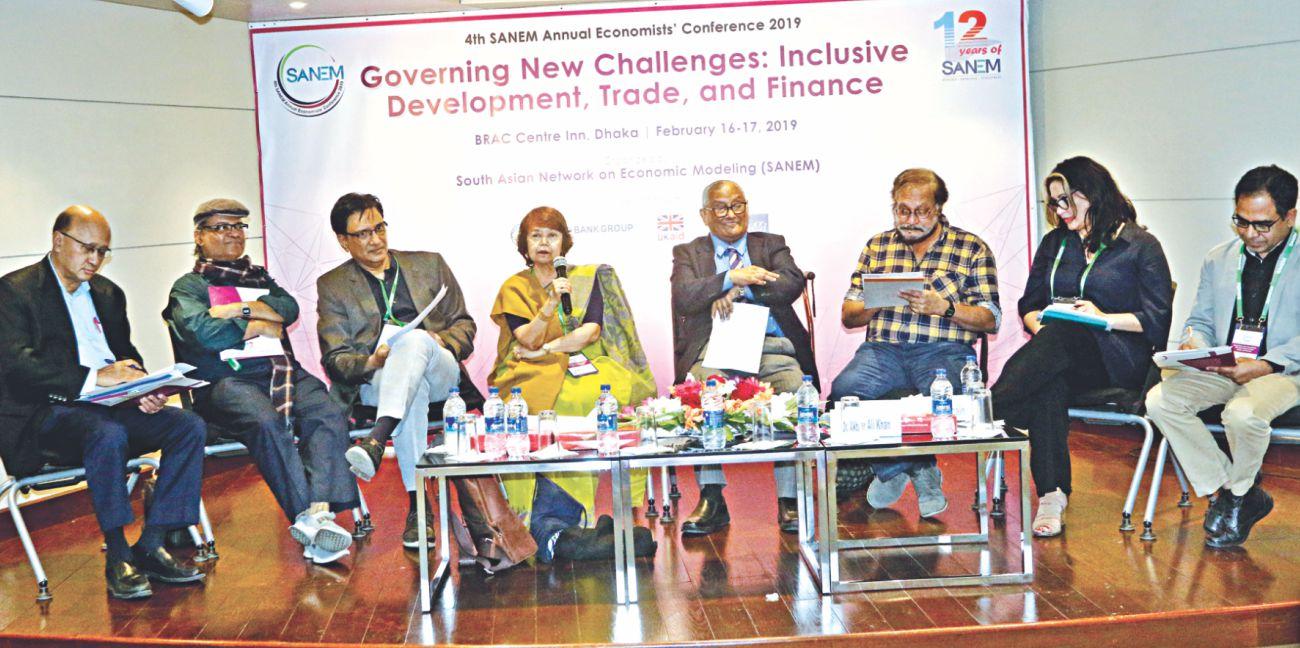Huge gender pay gap drives women away: analysts

Barriers to women's participation in the workforce have eased but there is still a huge wage gap between men and women, said economists yesterday.
Women are doing the same work with same skills as men, but are getting paid less, said Wahiduddin Mahmud, an eminent economist, at the 4th SANEM Annual Economists' Conference organised by the South Asian Network on Economic Modelling at the capital's Brac Centre Inn.
“This is one puzzle that the economists have been unable to solve. In economics, wage is determined by the demand and supply. But here, it is not working that way.”
The wage differentiation is acting as a deterrent to women joining the workforce.
“This is a big reason behind their poor participation,” said Mahmud, also a professor of the Dhaka University's economics department.
Bangladesh has been performing well in the social indicators where women played a very important role.
But, in the indicators pertaining to repression, violence and discrimination in health centres, Bangladesh is not doing well.
“This is an anomaly,” he added.
The country needs a comprehensive plan to reduce the problems women face in workplace, said Sayema Haque Bidisha, a professor of economics at the Dhaka University, who presented a study styled 'Female Employment Stagnation in Bangladesh' at the event.
The labour force participation rate of female increased but it has been stagnant at about 33 to 36 percent since 2010.
“On the other hand, women are being paid lowly and not employed for productive activities,” she added.
Vocational education is a significant and strong determinant of labour force participation, especially for formal employment, said Salma Begum, an associate professor of economics at North South University, who presented 'An extensive study of female labour force participation in Bangladesh'.
“So, women need to get vocational education.”
